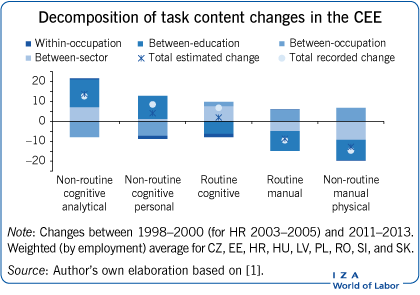
Clear expectations are crucial when setting goals. It makes evaluation more objective, and it reduces the possibility of confusion. This helps employees to set expectations and help them work towards those goals. You might, for example, set a goal that your sales rep must schedule at least two appointments per week. Next, determine the behavior that will lead you to these appointments.
SMART goals should be measurable
It is important to clearly define SMART goals and their objectives for employees. They should be clear and have clear markers for success. Clarity is a significant deterrent to reaching SMART goals. You should use markers that are easily visible from the workplace. You might, for example, define a goal as increasing the efficiency of your office's overall productivity by five percent. Employees will be motivated by clearly defined goals and will be able track their progress against them.
It is important to define a timeline for SMART goals. Once you have established a timeline, you can assign tasks to your team members. This will allow for you to keep track of workloads and pinpoint potential bottlenecks. You will find your team more capable of focusing their time, avoiding overwhelm, and reducing stress. A SMART target will be a useful tool in budget development, helping to identify the resources and tools required to achieve it.
Time-bound
The workplace goal-setting process should include a time-bound goal setting. Setting deadlines and setting goals with clear deadlines helps employees to be realistic and motivated. Unattainable goals can discourage employees and undermine employee motivation.

They must be quantifiable, achievable, and specific. They should be linked to the organization's objectives and employee development goals. The goals must be time-bound to create urgency in the team. Time-bound goals are more realistic and less likely to become irrelevant as business needs evolve.
You can achieve it
Setting attainable goals for employees is an essential aspect of employee motivation. These goals should be both challenging and realistic, taking into account the available resources. In addition, it's crucial that these goals have meaning and not simply be based on financial motivation. Employees will feel motivated and inspired if they are able to share a vision of the future with them.
Be aware of your employee's workload and available resources when setting performance goals. Given their sales ability, a goal of 8 per cent may not be realistic if they are in charge of sales. A goal of 8% may be unrealistic if salespeople are able to only achieve a 4 percent increase. Look at what others in their position have done in the past, especially if they're new to the business.
Relevant
Setting goals that are relevant to employees is a key part of career development and employee growth. It's crucial to stay competitive in today's market. Employees must keep abreast of the latest developments, best practices, and technical skills. It is not an easy task as employees often have multiple responsibilities, making it difficult to maintain a healthy work-life balance.
The organization's vision and mission should guide the setting of goals for employees. The goal of setting goals for employees can not only motivate them but it can also help the company grow. One example is to set goals that promote cross-cultural fluency. Efficiency, productivity, and sales. You can improve the business by setting goals that are relevant to your company's needs.

Manager and employee collaborate to achieve their goals
Setting goals can be a great way to motivate employees, and give feedback on their work. Setting goals gives employees a sense they have control over their work. They also help managers better understand their employees. Goal setting fosters a positive culture in the workplace and builds trust between managers and employees. Moreover, employees who have goals feel aligned with the company's larger goals, which may lead to greater loyalty and productivity.
Both the employee and manager must agree on goals and communicate them clearly in order to achieve them. After setting goals, both the employee and manager should review them regularly. They can then clarify their roles and determine new actions to help them reach their shared goals. Managers need to let their staff know they take part in goal-setting. They should also reinforce them when needed.